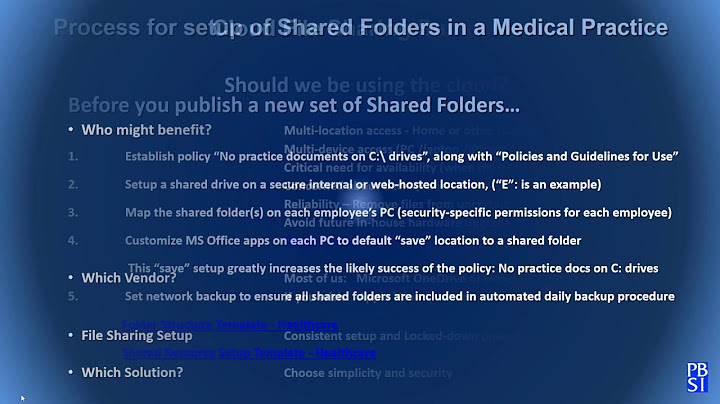Question 92 / 2 ptsWhat are two disadvantages of sharing a directly connected printer from a computer? (Choosetwo.)Other computers do not need to be cabled directly to the printer.Only one computer at a time can use the printer.All the computers using the printer need to use the same operating system.Correct!The computer sharing the printer uses its own resources to manage all the print jobs coming tothe printer.Correct!The computer directly connected to the printer always needs to be powered on, even if not in use.Refer to curriculum topic: 8.4.2Not requiring the other computers to be cabled directly to the printer is an advantage of printersharing. To share a printer computers do not need to be running the same operating system, andmore than one computer can send print jobs to the shared printer at the same time. However, thecomputer directly connected to the printer does needs to be powered on, even if not in use. Ituses its own resources to manage all the print jobs coming to the printer. Show
Question 102 / 2 ptsHow could a user share a locally connected printer with other users on the same network?  Refer to curriculum topic: 8.4.1Enabling print sharing allows a computer to share the printer over the network. Installing a USBhub allows a number of peripheral connections to the same computer. Print drivers do notprovide the ability to share printers.Question 112 / 2 ptsA technician wants to share a printer on the network but according to the company policy, no PCshould have a directly connected printer. Which device would the technician need? In a typical local area network, a central file server provides services to each computer on the network. The server grants access to the network through authentication and shares resources such as files, folders and printers. When you don't have a file server, you can create a peer-to-peer network and share each computer's resources with all other computers. However, print sharing on peer-to-peer has some disadvantages related to energy consumption, productivity, printer installation and general peer-to-peer limitations. Uses Energy InefficientlyWhen a computer shares its printer over a peer-to-peer network, the computer and the printer need to be powered on for the printer to work. If the only reason for leaving a computer powered on is to wait for print jobs, a significant amount of power is used waiting for something that might not ever happen. There are other devices, such as wireless print servers, that consume far less power than a computer and are designed to lower their power consumption even further while waiting for print jobs to arrive. Difficult to InstallAdding a peer-to-peer network printer can be a difficult task for the average user, suggests GroovyPost. The user installing the shared printer on his computer needs to install the drivers for the shared printer. He may have to download them from the printer manufacturer's website. However, first he needs to know the exact model of the printer, which may be difficult to determine. An average user may not be able to successfully install the printer without assistance. Detracts from ProductivityA shared peer-to-peer printer that's heavily used can decrease the productivity and job satisfaction of the person sharing the printer, because tending to the printer becomes a distraction that occupies an increasing amount of time. It can also add to background noise which is a major workplace distraction, reports Clockify. Printers run out of paper and need paper added. They also run out of ink or toner. When a printer jams, a person needs to determine the source of the jam, clear the jam and restart the print queue. The printer owner is the most likely person to be burdened with these tasks for print jobs that are not her own. Work Groups and LimitationsTo create a peer-to-peer network, each computer on the network has to belong to the same work group. Computers must be configured specifically for membership in the work group and cannot belong to a domain. If you have more than, say, 10 computers to network, it may not be ideal to create a peer-to-peer network because of the amount of network traffic created by the peer-to-peer communication. What are two disadvantages of sharing a directly connected printer from your computer?1. The computer sharing the printer uses its own resources to manage all the print jobs coming to the printer. 2. The computer directly connected to the printer always needs to be powered on, even if not in use.
What is the disadvantage of sharing a printer?A shared peer-to-peer printer that's heavily used can decrease the productivity and job satisfaction of the person sharing the printer, because tending to the printer becomes a distraction that occupies an increasing amount of time.
What are the advantage and disadvantage of printer sharing?Advantage is many people can use one printer, and that is significant cost saving compared to each people need his/her own printer. It is also much simpler to deploy printer solutions since you will be dealing with 1 or 2 printer for many people. Disadvantage is when it come to trouble shooting.
What is the main disadvantage of sharing any locally installed printer via Windows?As a downside, with multiple users capable of accessing the same printers, projects can be delayed when the printer is already in use. Additionally, if the network goes down then printers become inaccessible.
|

zusammenhängende Posts
Werbung
NEUESTEN NACHRICHTEN
Werbung
Populer
Werbung

Urheberrechte © © 2024 defrojeostern Inc.

















